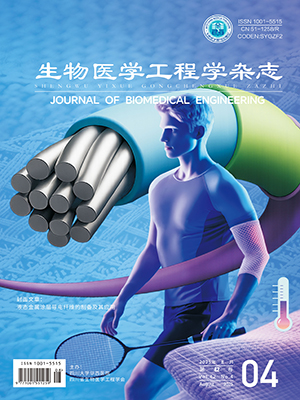| 1. |
Westeinde E A, Kellogg E, Dawson P M, et al. Transforming a head direction signal into a goal-oriented steering command. Nature, 2024, 626(8000): 819-826.
|
| 2. |
廖诣深, 于乃功. 基于大鼠大脑内嗅-海马-前额叶信息传导回路的空间导航方法. 生物医学工程学杂志, 2024, 41(1): 80-89.
|
| 3. |
Ji Z, Lomi E, Jeffery K, et al. Phase precession relative to turning angle in theta-modulated head direction cells. Hippocampus, 2025, 35(2): e70008.
|
| 4. |
刘晨, 熊智, 华冰, 等. 基于位置细胞与网格细胞信息融合的类脑导航方法. 中国空间科学技术(中英文), 2025, 45(1): 113-123.
|
| 5. |
Taube J S, Muller R U, Ranck J B. Head-direction cells recorded from the postsubiculum in freely moving rats. I. Description and quantitative analysis. J Neurosci, 1990, 10(2): 420-435.
|
| 6. |
Taube J S. The discovery of head direction cells: A personal account. Hippocampus, 2024, 35(1): e23670.
|
| 7. |
Long X Y, Wang X X, Deng B, et al. Intrinsic bipolar head-direction cells in the medial entorhinal cortex. Adv Sci, 2024, 11(40): e2401216.
|
| 8. |
陈胤, 隋建峰. 头朝向细胞研究进展. 中华神经医学杂志, 2005(10): 101-103.
|
| 9. |
Hulse B K, Jayaraman V. Mechanisms underlying the neural computation of head direction. Annu Rev Neurosci, 2020, 43(1): 31-54.
|
| 10. |
Blanco-Hernández E, Balsamo G, Preston-Ferrer P, et al. Sensory and behavioral modulation of thalamic head-direction cells. Nat Neurosci, 2024, 27(1): 28-33.
|
| 11. |
Taube J S, Butler W N, Dumont J R, et al. Generating the head direction signal: Two types of head direction cells in the lateral mammillary nuclei and dorsal tegmental nuclei. bioRxiv, 2025: 2025.04.11.648409.
|
| 12. |
Stratton P, Milford M, Wyeth G, et al. Using strategic movement to calibrate a neural compass: A spiking network for tracking head direction in rats and robots. PLoS ONE, 2011, 6(10): e25687.
|
| 13. |
Tang Z H, Wang X P, Yang C, et al. A bionic localization memristive circuit based on spatial cognitive mechanisms of hippocampus and entorhinal cortex. IEEE Trans Biomed Circuits Syst, 2024, 18(3): 552-563.
|
| 14. |
Bicanski A, Burgess N. Environmental anchoring of head direction in a computational model of retrosplenial cortex. J Neurosci, 2016, 36(46): 11601-11618.
|
| 15. |
Grieves R M, Shinder M E, Rosow L K, et al. The neural correlates of spatial disorientation in head direction cells. eNeuro, 2022, 9(6): ENEURO.0174-22.2022.
|
| 16. |
Sharp P E, Tinkelman A, Cho J. Angular velocity and head direction signals recorded from the dorsal tegmental nucleus of Gudden in the rat: Implications for path integration in the head direction cell circuit. Behav Neurosci, 2001, 115(3): 571-588.
|
| 17. |
Song P C, Wang X J. Angular path integration by moving “hill of activity”: A spiking neuron model without recurrent excitation of the head-direction system. J Neurosci, 2005, 25(4): 1002-1014.
|
| 18. |
Yan Y J, Burgess N, Bicanski A. A model of head direction and landmark coding in complex environments. PLoS Comput Biol, 2021, 17(9): e1009434.
|
| 19. |
Goodridge J P, Touretzky D S. Modeling attractor deformation in the rodent head-direction system. J Neurophysiol, 2000, 83(6): 3402-3410.
|
| 20. |
Redish A D, Elga A N, Touretzky D S. A coupled attractor model of the rodent head direction system. Netw Comput Neural Syst, 1996, 7(4): 671-685.
|
| 21. |
Skaggs W E, Knierim J J, Kudrimoti H S, et al. A model of the neural basis of the rat's sense of direction// Touretzky D S, Tesauro G, Leen T K, et al. Advances in neural information processing systems. Cambridge: MIT Press, 1995, 7: 173-180.
|
| 22. |
Stentiford R, Knowles T C, Pearson M J. A spiking neural network model of rodent head direction calibrated with landmark free learning. Front Neurorobot, 2022, 16: 867019.
|
| 23. |
Bing Z S, Nitschke D, Zhuang G H, et al. Towards cognitive navigation: A biologically inspired calibration mechanism for the head direction cell network. J Autom Intell, 2023, 2(1): 31-41.
|
| 24. |
Nitzan N, Buzsáki G. Physiological characteristics of neurons in the mammillary bodies align with topographical organization of subicular inputs. Cell Rep, 2024, 44(7): 114539.
|
| 25. |
Street J S, Jeffery K J. The dorsal thalamic lateral geniculate nucleus is required for visual control of head direction cell firing direction in rats. J Physiol, 2024, 602(20): 5247-5267.
|
| 26. |
Sun H, Cai R L, Li R, et al. Conjunctive processing of spatial border and locomotion in retrosplenial cortex during spatial navigation. J Physiol, 2024, 602(19): 5017-5038.
|
| 27. |
Huang Y, Lin X, Ren H, et al. CLIF: Complementary leaky integrate-and-fire neuron for spiking neural networks// International Conference on Machine Learning. Vienna: PMLR, 2024: 19949-19972.
|
| 28. |
Eppler J M. PyNEST: A convenient interface to the NEST simulator. Front Neuroinform, 2008, 2: 12.
|
| 29. |
Knowles T C, Stentiford R, Pearson M J. WhiskEye: A biomimetic model of multisensory spatial memory based on sensory reconstruction// Lepora N, Mura A, Mastrogiovanni F, et al. Towards autonomous robotic systems. Cham: Springer, 2021: 408-418.
|




